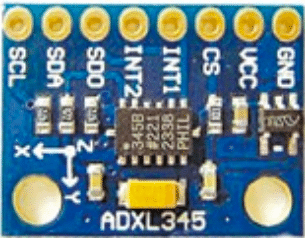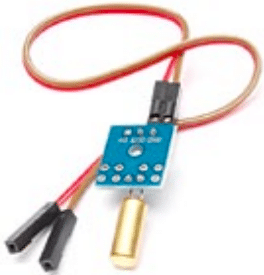An accelerometer is an electromechanical device that measures acceleration forces.
The forces may be static or dynamic. If you have the amount of static acceleration due to gravity, you can find out the angle the device is tilted at with respect to the earth’s surface. If you have the amount of dynamic acceleration, you can analyse the way the device is moving.
It can be used to measure vibration on vehicles, safety monitoring devices, industrial machines and process control systems. These are also used to measure seismic activity, inclination, dynamic distance, and speed with or without the influence of gravity.
Accelerometers are commonly made of either piezoelectric, piezoresistive or capacitive elements, which are used to convert the mechanical motion into an electrical signal. The piezoelectric is the most common form of accelerometer that uses microscopic crystal structures. When the static crystal structure is deformed due to physical force or bending, it creates a voltage from the stress and the accelerometer interprets the voltage to determine velocity and orientation.
Accelerometer sensor vs tilt sensor
Accelerometer sensor
These are available in one-, two- or three-axis models to detect magnitude and direction of acceleration. Accelerometers in most smartphones make use of three-axis models, whereas only two axes are used insome cars to determine the moment of impact. The more sensitive the accelerometer, the more easily it can measure acceleration.
An accelerometer can be used as a tilt sensor but not all tilt sensors are accelerometers. For example, a mercury tilt sensor can’t give you a readout of acceleration. A typical accelerometer sensor is shown in Fig. 1.

Tilt sensor
It’s like a type of on/off level switch. It simply tells you that it has tilted. Its contact opens when tilted and closes when not tilted. The contact doesn’t open through other logic unless it is physically tilted. Normally, a tilt sensor doesn’t measure motion. A full motion detector would use at least three axes and often additional sensors. A tilt sensor often measures the tilting in two axes of a reference plane. A typical tilt sensor is shown in Fig. 2.

For reading other exciting tutorial articles: click here










